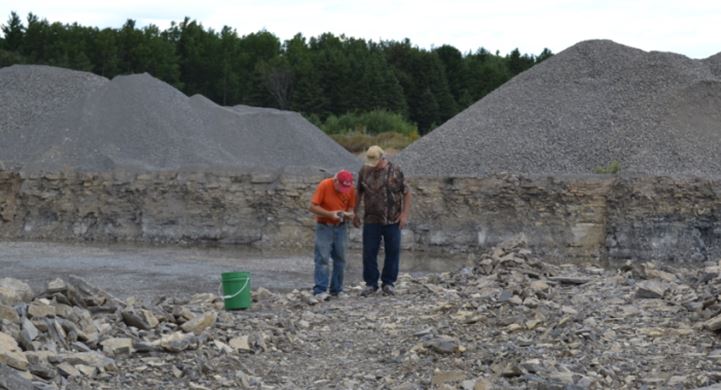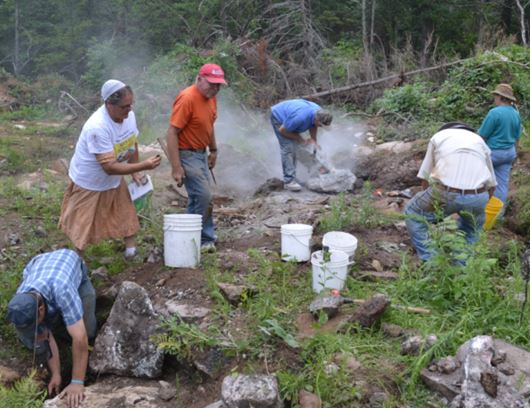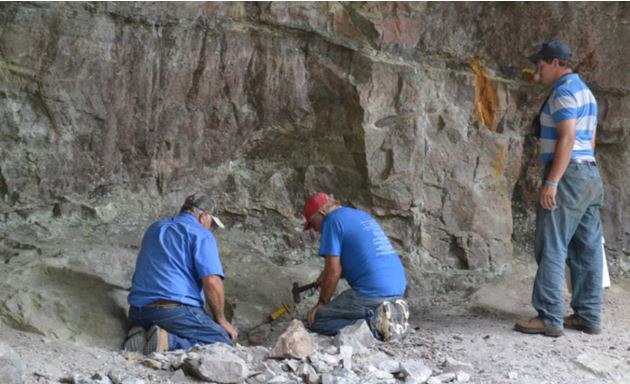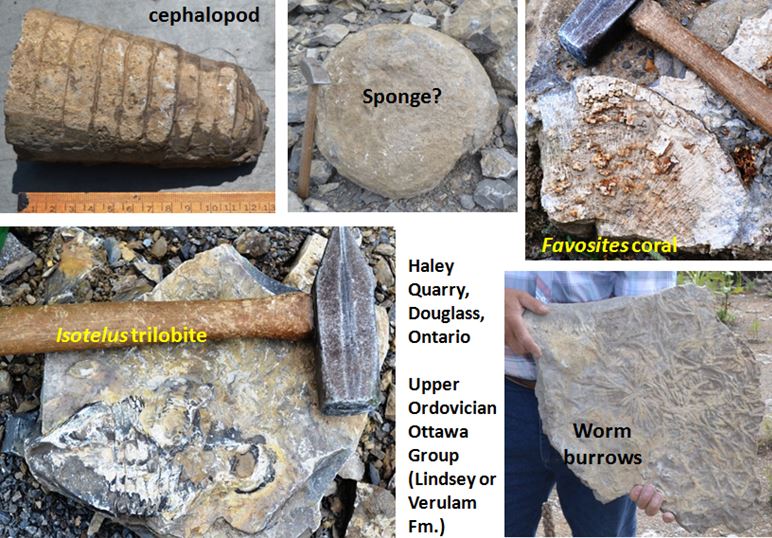After 3 nights in Cobalt (see August WCGMC newsletter), we headed to Eganville in search of more collecting adventure.
Although the primary objective of our trek back to the Grenville Province was minerals, our first stop was at a limestone quarry where large cephalopods and coral could be found. The Haley Quarry, 8 miles southeast of Eganville, exposes the Lindsey and Verulam Formations of the Upper Ordovician Ottawa Group which are known for their large cephalopods, some of which are exposed in nearby Bonnecherre caves.

Although we found nothing comparing to the 6-8’ straight shelled cephalopods known to the region we did find several 4-6” long , 2-3” diameter specimens like the one in the upper left below. Bill Chapman even found a large Isotelus trilobite and Favosites colonies were abundant: a good afternoon of fossil hunting after the drive down from Cobalt.
It was back to the Grenville and calcite-vein dike minerals on Thursday at a new favorite haunt, the Miller property 20 miles west of Eganville near Clear Lake. The owner had cleared new land since last year and we focused our attention there, digging apatite, titanite, biotite, and even some nice feldspar. We did not, however, unearth any half-inch zircons which have been reportedly found on the new diggings on the location. But, the small amazonite pit in the woods behind the main workings had been expanded since our last visit and yielded some treasure.




The next stop was the Beryl Pit near Quadville. This site hosts a complex pegmatite with great mineralogical variety. Recalling our 2014 experience at the border, we tried to avoid too much radioactive euxenite and aeschynite and ended up focusing on a region of pink feldspar with large green beryl crystals in the floor of the quarry. Everyone ended up a nice piece or two from this hole, but the site also yielded tourmaline (var. schorl), cleavlandite, and even a little purple fluorite. The Beryl pit is a private pay site that is a must stop for anyone visiting the eastern end of the Bancroft district.


Our final stop on the trip was much simpler from a mineralogy point of view. We visited the Burgess Mine and collected corundum. The syenite is deficient in silica (and rich in aluminum) such that corundum (simple Al2O3) forms instead of all the aluminum being consumed in silicate minerals like feldspars. Lots of steely grey crystals with slight ruby sheen to be found, the trick is to find crystalline, terminated specimen.


